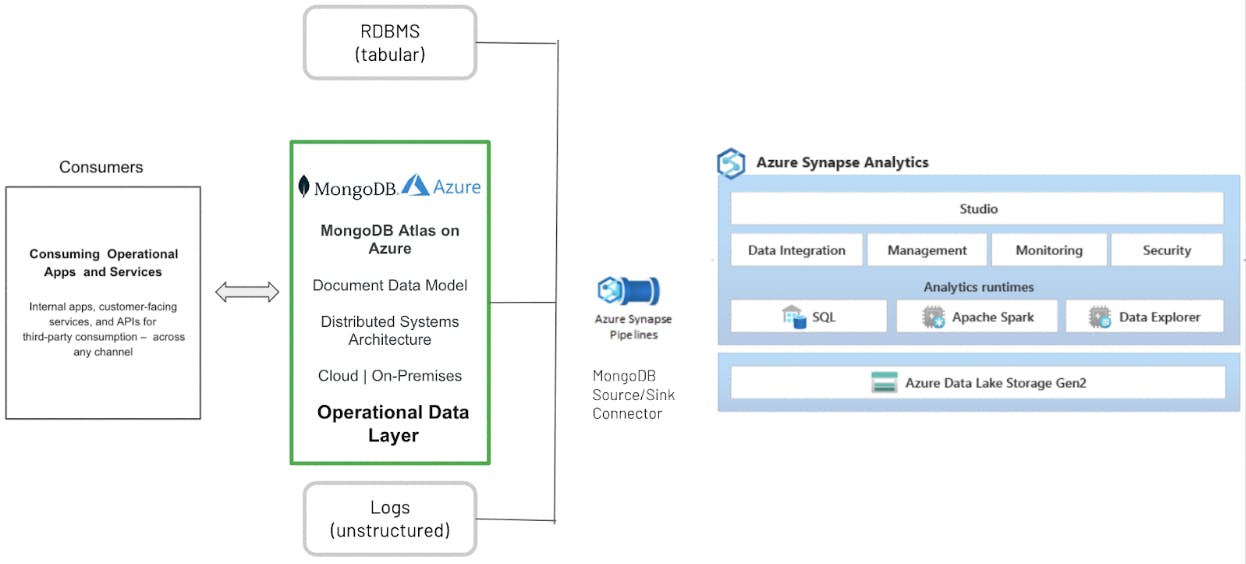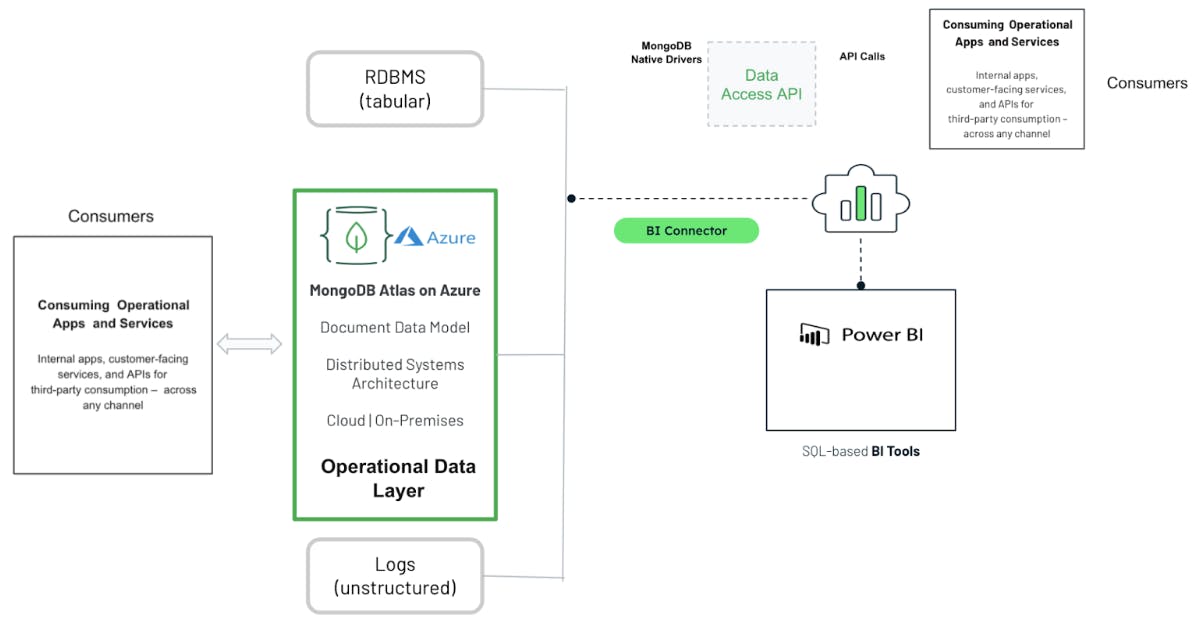Build Analytics-Driven Apps with MongoDB Atlas and the Microsoft Intelligent Data Platform
Customers increasingly expect engaging applications informed by real-time operational analytics, yet meeting these expectations can be difficult. MongoDB Atlas is a popular operational data platform that makes it straightforward to manage critical business data at scale.
For some applications, however, enterprises may also want to apply insights gleaned from data warehouse, business intelligence (BI), and related solutions, and many enterprises depend on the Microsoft Intelligent Data Platform to apply analytics and governance solutions to operational data stores.
MongoDB and Microsoft have partnered to make it simple to use the Microsoft Intelligent Data Platform to glean and apply comprehensive analytical insights to data stored in MongoDB. This article details how enterprises can successfully use MongoDB with the Microsoft Intelligent Data Platform to build more engaging, analytics-driven applications.
Microsoft Intelligent Data Platform + MongoDB
MongoDB Atlas provides a unified interface for developers to build distributed, serverless, and mobile applications with support for diverse workload types including operational, real-time analytics, and search. With the ability to model graph, geospatial, tabular, document, time series, and other forms of data, developers don’t have to go for multiple niche databases, which results in highly complex, polyglot architectures.
The Microsoft Intelligent Data Platform offers a single platform for databases, analytics, and data governance by integrating Microsoft’s database, analytics, and data governance products. In addition to all Azure database services, the Microsoft Intelligent Data Platform includes Azure Synapse Analytics for data warehousing and analytics, Power BI for BI reporting, and Microsoft Purview for enterprise data governance requirements.
Although customers have always been able to apply the Microsoft Intelligent Data Platform services to MongoDB data, doing so hasn't always been as simple as it could be. Through this new integration, customers gain a seamless way to run analytics and data warehousing operations on the operational data they store in MongoDB Atlas. Customers can also more easily use Microsoft Purview to manage and run data governance policies against their most critical MongoDB data, thereby ensuring compliance and security. Finally, through Power BI customers are empowered to easily query and extract insights from MongoDB data using powerful in-built and custom visualizations.
Let’s deep dive into each of these integrations.
Operationalize insights with MongoDB Atlas and Azure Synapse Analytics
MongoDB Atlas is an Operational Data Platform which can handle multiple workload types including transactional, search, operational analytics, etc. It can cater to multiple application types including distributed, serverless, mobile, etc. For data warehousing workloads, long-running analytics, and AI/ML, we compliment Azure Synapse Analytics very well. MongoDB Atlas can be easily integrated as a source or as a sink resource in Azure Synapse Analytics. This connector is useful to:
-
Fetch all the MongoDB Atlas historical data into Synapse
-
Retrieve incremental data for a period based on filter criteria in a batch mode, to run SQL based or Spark based analytics
The sink connector allows you to store the analytics results back to MongoDB, which can then power applications enabled on top of it.
Many enterprises require real-time analytics, for example, in fraud detection, anomaly detection of IoT devices, predicting stock depletion, and maintenance of machinery, where a delay in getting insights could cause serious repercussions. MongoDB and Microsoft have worked together to come up with the best practice architecture for the same which can be found in this article.

Business intelligence reporting and visualization with PowerBI
Together, MongoDB Atlas and Microsoft PowerBI offer a sophisticated real-time data platform, providing customers with the ability to present specialized operational and analytical query engines on the same data sets.
MongoDB is also excited to announce the forthcoming MongoDB Atlas Power BI Connector that will expose the richness of the JSON document data with Power BI (see Figure 2). This MongoDB Atlas Power BI Connector allows users to unlock access to their Atlas cloud data.

Beyond providing mere access to MongoDB Atlas data, this connector will provide a SQL interface to let you interact with semi-structured JSON data in a relational way, thereby ensuring you can take full advantage of Power BI's rich business intelligence capabilities. Importantly, through the connector, support is planned for two connectivity modes: import and direct. This new MongoDB Atlas Power BI Connector will be available in the first half of 2023.
Conclusion
Together with the Microsoft Intelligent Data Platform offerings, MongoDB Atlas can help operationalize the insights driven from customers’ data spread across siloed legacy databases and help build modern applications with ease.
With MongoDB Atlas on Microsoft Azure, developers receive access to the most comprehensive, secure, scalable, and cloud–based developer data platform in the market. Now, with the availability of Atlas on the Azure Marketplace, it’s never been easier for users to start building with Atlas while streamlining procurement and billing processes.
Get started today through the MongoDB Atlas on Azure Marketplace listing.